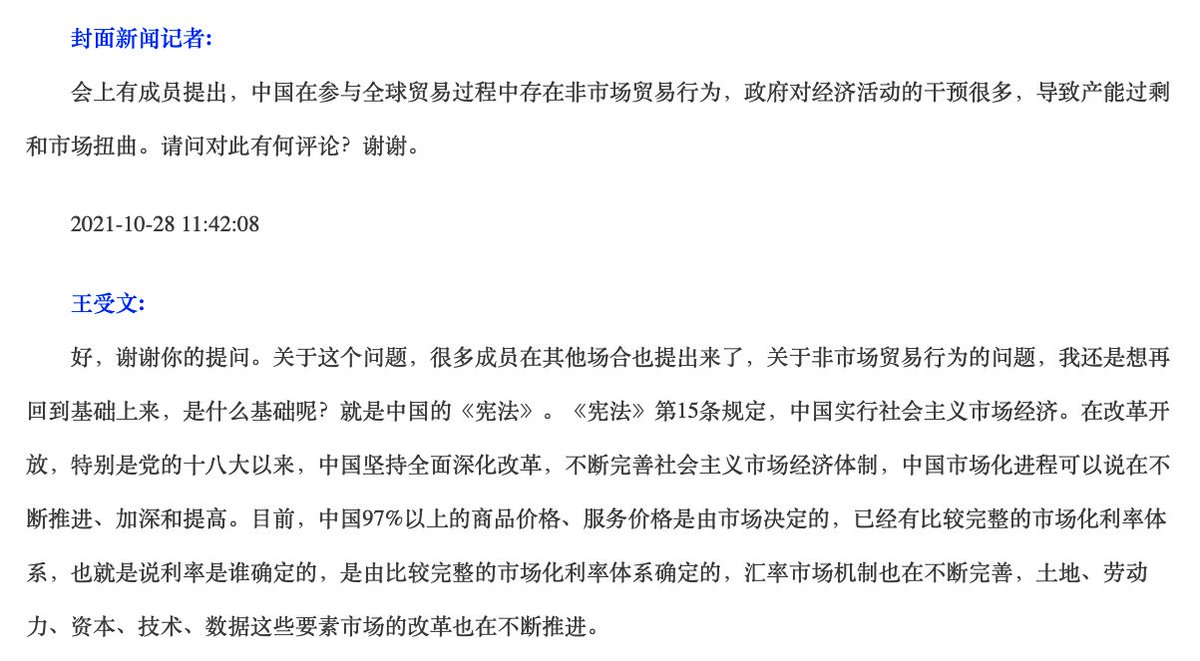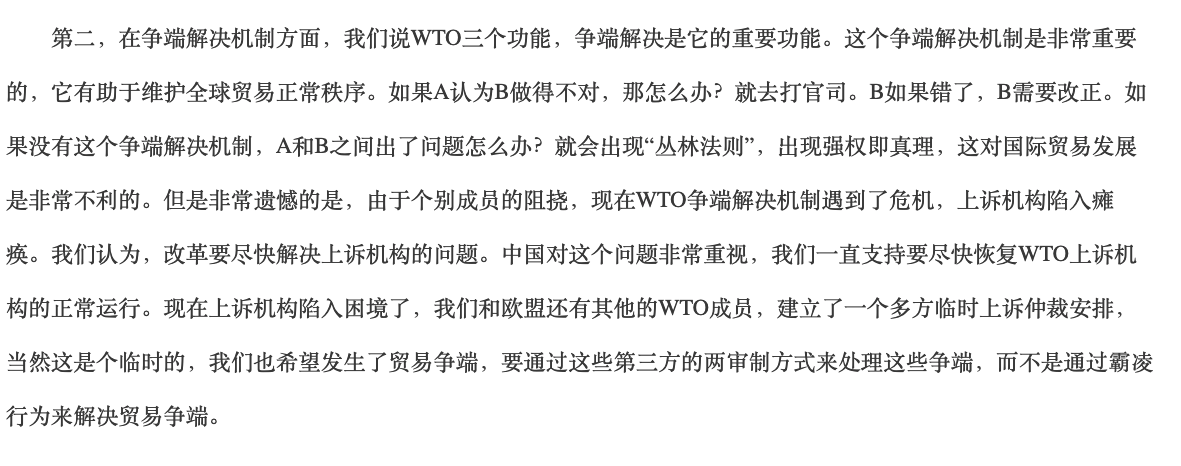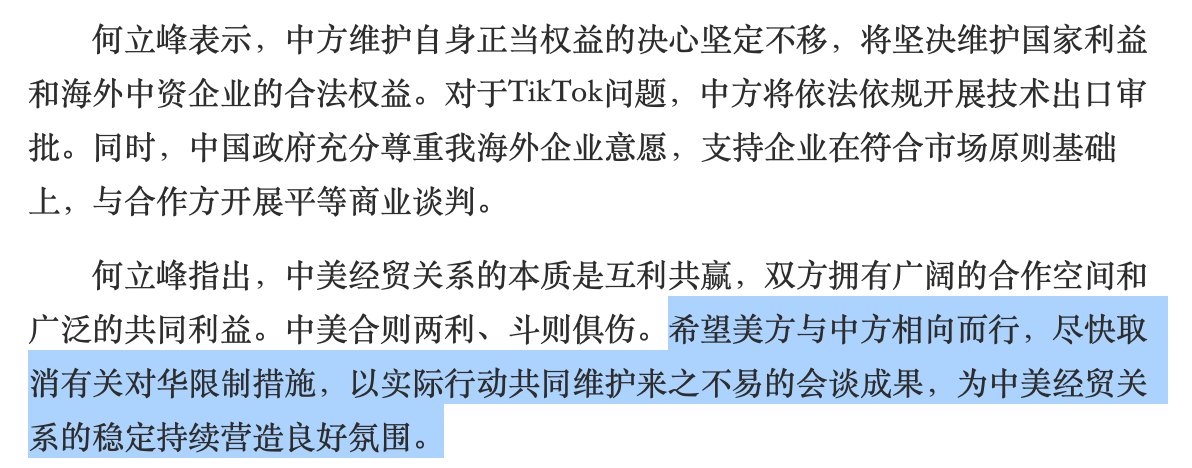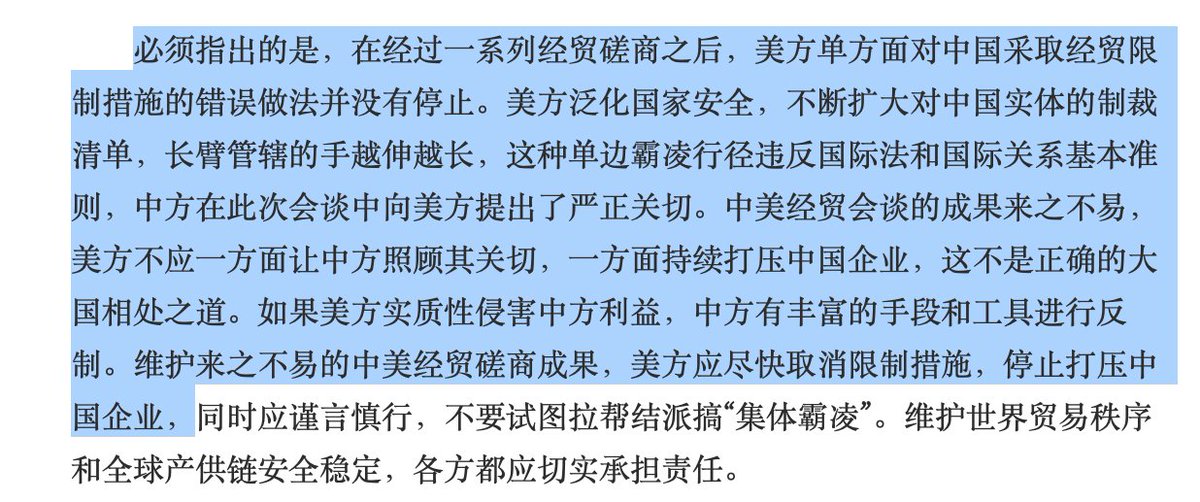State Council Info Office held a special press con today on China's 8th TPR:
scio.gov.cn/xwfbh/xwbfbh/w…
scio.gov.cn/xwfbh/xwbfbh/w…

What are the hot issues from Member's 2562 questions?
Under WTO agreements:
China's implementation of WTO TFA;
consistency of its Cyberseucity law with GATS;
disclosure of info in IPR cases as per TRIPS requirements.
Under WTO agreements:
China's implementation of WTO TFA;
consistency of its Cyberseucity law with GATS;
disclosure of info in IPR cases as per TRIPS requirements.

Questions beyond WTO rules:
China to further open up the market, relax restrictions on foreign investment access, reduce the negative list of foreign investment, and promote the innovation of the pilot free trade zone system to be replicated and promoted throughout the country.
China to further open up the market, relax restrictions on foreign investment access, reduce the negative list of foreign investment, and promote the innovation of the pilot free trade zone system to be replicated and promoted throughout the country.

China on subsidies:
1. agricultural subsidies must be discussed simultaneously with industrial subsidies
2. discuss tightening trade remedy disciplines such as anti-subsidy and anti-dumping to solve the current abuse of trade remedy measures
3. restoring non-actionable subsidies
1. agricultural subsidies must be discussed simultaneously with industrial subsidies
2. discuss tightening trade remedy disciplines such as anti-subsidy and anti-dumping to solve the current abuse of trade remedy measures
3. restoring non-actionable subsidies

On developing country status:
China didn't get SDT in its accession, and have assumed obligations beyond normally required of developing countries since becoming a member, like in TFA & ITA, as I discussed with @WeihuanZhou at
theconversation.com/myth-busted-ch…
China didn't get SDT in its accession, and have assumed obligations beyond normally required of developing countries since becoming a member, like in TFA & ITA, as I discussed with @WeihuanZhou at
theconversation.com/myth-busted-ch…

On investment restriction:
The issue is beyond WTO but China is willing to deal with this issue through FTAs and BITs. For example, China has filed application to join the CPTPP. CPTPP has high standards for investment, and China is willing to deal with it through these channels.
The issue is beyond WTO but China is willing to deal with this issue through FTAs and BITs. For example, China has filed application to join the CPTPP. CPTPP has high standards for investment, and China is willing to deal with it through these channels.

Again, this confirms my observation in this op-ed with @WeihuanZhou last month, that China is serious about its CPTPP application and is willing to make meaningful concessions to get in.
asia.nikkei.com/Opinion/China-…
asia.nikkei.com/Opinion/China-…
On criticisms on China's trade policy during the TPR:
There are 2 types of comments:
1. those covered by WTO rules, which China will take seriously and fulfill them,
2. those beyond WTO rules, which are unfair, unreasonable, and unacceptable for China.
There are 2 types of comments:
1. those covered by WTO rules, which China will take seriously and fulfill them,
2. those beyond WTO rules, which are unfair, unreasonable, and unacceptable for China.

On China's alleged non-market trade practice and gov't intervention which resulted in overcapacity and market distortion:
Need to go back to the basics. What is the basics? It is China's Constitution, which states in Article 15 that China implements a socialist market economy.
Need to go back to the basics. What is the basics? It is China's Constitution, which states in Article 15 that China implements a socialist market economy.

From 2018 to 2020, China has compressed 150 million tons of crude steel production capacity. Now China’s crude steel capacity utilization rate is more than 80%, and the aluminum industry capacity utilization rate is more than 85%, so there is no overcapacity in these 2 industries 

On WTO Reform:
1. It must not only resolve traditional issues and historical debts, but also formulate rules on some new issues and realize the modernization of rules.
More specifically, ag subsidy, public stockholding, e-commerce, investment facilitation, fisheries etc.
1. It must not only resolve traditional issues and historical debts, but also formulate rules on some new issues and realize the modernization of rules.
More specifically, ag subsidy, public stockholding, e-commerce, investment facilitation, fisheries etc.

3. On issues like e-commerce, China hold an open attitude and adopt the joint declaration initiative. Some members first reach an agreement, i.e., plurilateral agreement to resolve some specific regulatory issues in these areas. Later other Members can join. 

• • •
Missing some Tweet in this thread? You can try to
force a refresh


















